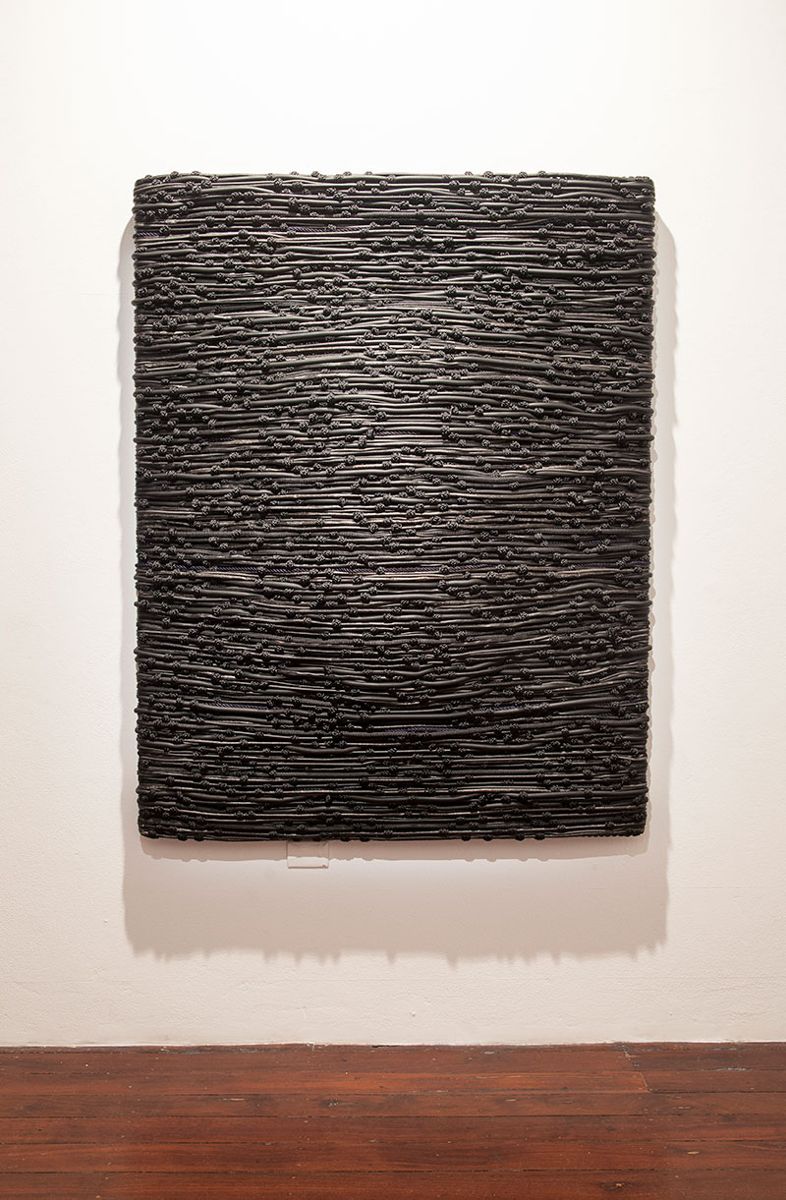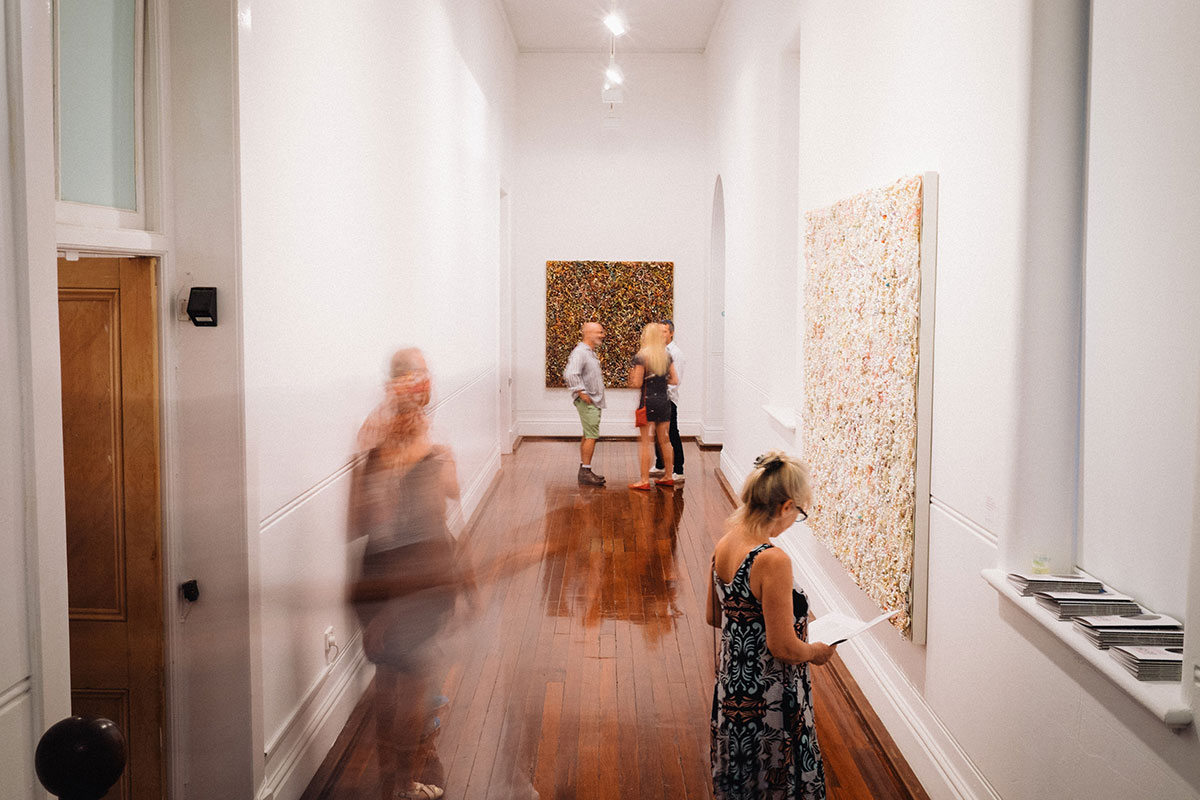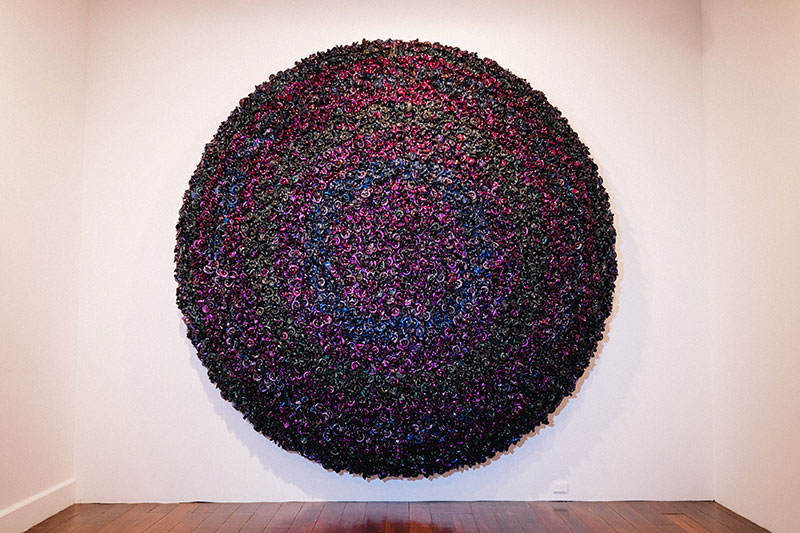
I made the mistake of thinking I’d seen Dani Marti’s Black Sun before I’d seen it. In the week or so following its opening, social media feeds in Perth were liberally peppered with images of what Marti refers to as paintings, their surfaces heavy with the sheen and glitter of woven mass-produced forms. In their scale and their optical tricks, these objects – so dense and rich in texture, so bodily in presence – beg to be photographed, to become images.
Black Sun features a series of these paintings in conversation with works in sound and moving image, in which literal bodies – those of Marti himself, his mother, a stranger, a choir of men – explore their limits. Moving between these media produces sensory fluctuations: dense accretions of recognisable, everyday objects flatten into surfaces and become abstract; bodies made distant and abstract by screens and speakers in turn provoke intense, corporeal reactions. Everything is made strange, made familiar, made strange again. What drives these fluctuations is desire.
Marti’s paintings might beg to be photographed, but they also beg to be touched – a desire deeply frustrated by gallery convention. This tension between vision and touch is introduced by the placement of paintings of immersive scale at both entrance points to the exhibition. Marti uses the term “paintings” deliberately, recalling histories of hard-edged minimalism, the monochrome and also of portraiture, but their language is fundamentally sculptural, speaking of both the material and labour of their making. The looming, circular Prelude (2015) consists of a multitude of reflector cubes squeezed into curvy, florid platelets and arranged in a radial gradient of deep purple, blue-black and teal. It’s the physical embodiment of the exhibition’s title, sucking in and throwing up light. The Pleasure Chest and Mother series weave second-hand necklaces into large, intricate monochromes awash with sensations; a flash of the mean reds, an enveloping darkness, the fondling of rosary beads or a pelt of glistening skin.
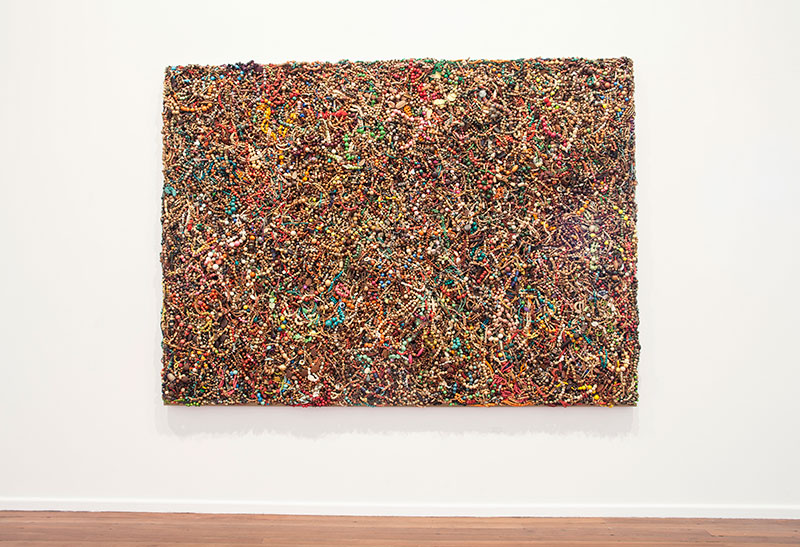
Placed at the centre of a suite of the Mother compositions is the 2007 video, Llorana, an update of Bas Jan Ader’s 1970–71 I’m Too Sad To Tell You. Ader’s video is roughly three minutes long, but Llorana is a confronting seventeen minutes. Closely-framed black-and-white footage captures Marti’s elderly mother as she listens to Rachmaninov’s Concerto No. 2, fingers tipped with polish tracing the notes and eyes wet with tears. Shown on a cathode-era television placed on the floor, the video has undeniable presence and requires a certain level of physical discomfort to view in full; the reward is to turn back to the paintings and find them suddenly recast as a portrait and a memorial, their structural rhythm and emotional charge heightened.
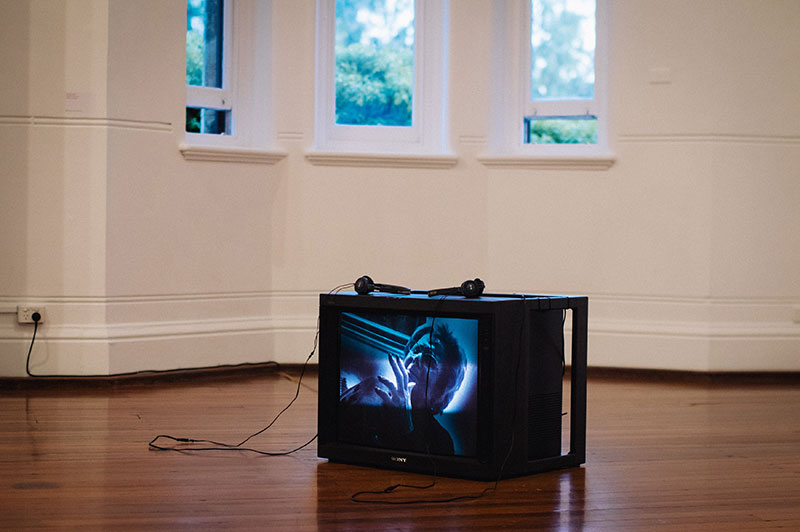
Dani Marti, Llorana, 2007, digital video. Ccurtesy the Artist; GAGPROJECTS | Greenaway Art Gallery, Adelaide; ARC ONE GALLERY, Melbourne; and Dominik Mersch Gallery, Sydney
Rhythms, longing and tensions between sigh and touch are also in play in the series Notes for Bob (2013–15). The project has at its central subject a blind, gay man Marti met while on residency in New York in 2012 and it documents a number of exchanges between the pair. In the video Notes for Bob (Embrace) (2015) Bob sits on Marti’s lap and directs his hands and voice through a series of intimate motions. Viewing it should feel voyeuristic, especially as the gaze of the camera is invisible to the subject, but this is mediated by Marti’s own vulnerability and generosity in the encounter and by an impartial, pared back cinematography. Notes for Bob (Embrace) may be uncomfortable to watch, but this is due more to its honesty and sensitivity towards bodies and desires marginalised in mainstream representation rather than any ethical quandary about the “use” of its subject. Extending this investigation is a series of nubbly surfaces of woven yellow and white rope immersed in a soundscape that translate notes sung by Marti to Bob during their embrace into a harmonic chorus. Twenty-one gay male volunteers, aged between the ages of 17 and 72 were apparently commissioned to produce the recording, which was gifted to Bob as a lasting resource for pleasure and meditation, although the particularities of this process, which adds resonance to the installation, are left curiously unacknowledged in any exhibition text.
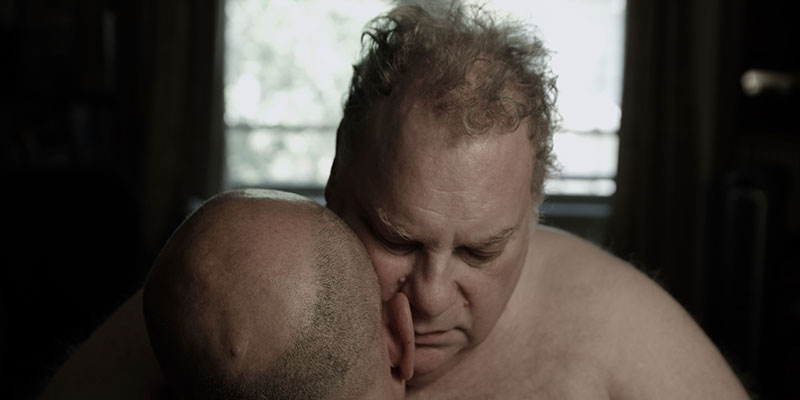
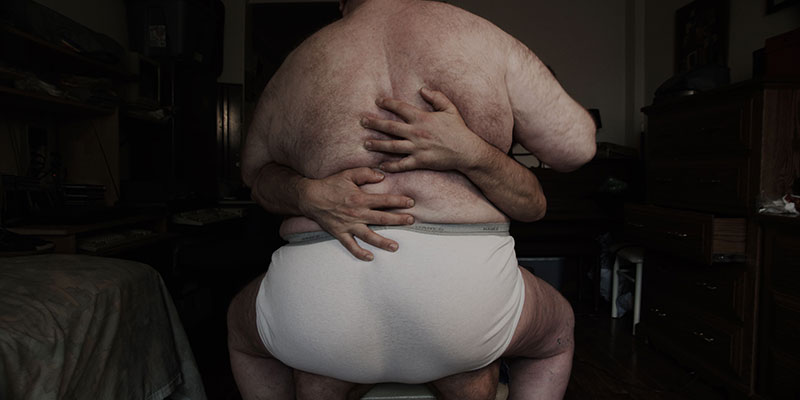
Throughout the exhibition surfaces are pushed and stretched. Other woven works, Shields – Studies for a Portrait (2015), bulge as though concealing a belly; in the video installation Golden Years (2014) Marti tongues a handheld mirror until it appears to dissolve. What begins as a fluctuation becomes after sustained viewing an equivalence; an object is an image, a body is a painting, surfaces are deep. For Marti, the surfaces is a site of infinitely complexity, both in their materially and as mediator between our private desires and their outward expressions. Marti’s work speaks of the outward inaccessibility of desire and of the interior lives of others but also of potential weak spots, points of contact and fusion and dissolution. His methods and materials might reference any number of historical moments and methods, but the most fitting and useful categorisation for his work remains the age-old genre of portraiture, driven onwards into our contemporary world by an eternal desire to hold in our surfaces some semblance of what lies beneath.
